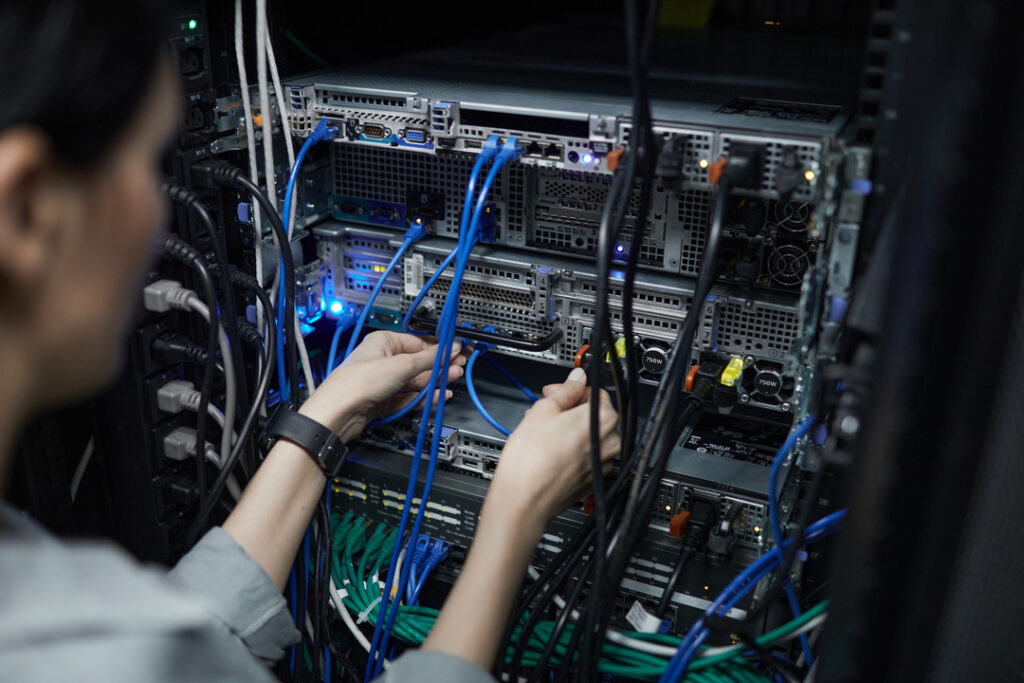Proper data cable installation is essential for ensuring efficient, scalable, and reliable network performance in commercial buildings. Seamless connectivity has become paramount, and your business must prioritize its network infrastructure to support operations and enhance productivity.
This blog will delve into best practices that provide invaluable insights to help you achieve optimal results, reduce downtime, and future-proof your network.
Planning and Design
Proper planning and design are critical for a successful data cable installation. The process should involve careful consideration of the building’s layout, existing infrastructure, and future needs. Some best practices to follow during this stage include:
- Assess Building Needs: Analyze the building’s size, layout, and potential obstacles (e.g., concrete walls) to determine the type and quantity of cables needed.
- Choose the Right Cable: Between Cat5e, Cat6, and Cat6a cables, ensure you choose the most suitable one for your needs. Always opt for higher-category cables to future-proof your network.
- Design the Layout: Plan optimal cable routes for minimal interference and easy access for maintenance.
- Include Redundancy: Consider redundant cabling routes to ensure uninterrupted connectivity in case of cable damage or failures.
Compliance and Standards
Following industry norms and standards is essential for ensuring reliable and safe data cable installations. Codes like the National Electric Code (NEC) are designed to promote safety by establishing guidelines that reduce potential hazards during installation.
Additionally, cabling standards such as TIA/EIA-568-B and 606-B provide specifications for compatibility and proper installation techniques, ensuring that systems function effectively and efficiently while avoiding future problems.
- Meet Building Codes: Familiarize yourself with local building codes and regulations to avoid penalties and ensure safety.
- Verify Cable Conformance: Ensure all cables meet the required standards for performance and safety.
Cable Management
Proper cable management is crucial for maintaining a well-functioning network. It involves organizing and securing cables in an organized and efficient manner, avoiding potential hazards such as accidental disconnects, signal interference, or fire hazards.
- Organize and Label: Clearly label and organize cables to facilitate easier identification and troubleshooting.
- Use Cable Ties: Use cable ties for efficient organization and to reduce cable slack, minimizing the risk of damage or interference.
- Separate Power Cables: Keep power cables away from data cables to prevent electromagnetic interference (EMI).
- Prevent Damage: Avoid tight bends, sharp edges, or overloading cables by adhering to recommended bend radius and weight limits.
Installation Best Practices
Proper installation techniques are critical for the long-term performance and reliability of your data cable infrastructure. Here are some tips to follow during installation:
- Optimal Cable Lengths: Keep runs within recommended lengths to maintain performance levels and prevent signal loss.
- Quality Materials: Use high-quality cables and connectors to avoid frequent replacements and reduce downtime.
- Testing: Ensure all installations are tested and certified using appropriate equipment to verify performance and identify any potential issues.
- Work With a Professional: Consider working with a professional cabling service provider for larger installations to ensure proper techniques and compliance with codes and standards.
Future-Proofing
Technology advancements and growing network demands make future-proofing your data cable infrastructure crucial. Whether it’s planning for future expansion and upgrades or implementing the latest technologies, preparing for the future ensures your network can keep up with evolving technology.
- Plan for Growth: Install extra capacity to support future growth and avoid expensive upgrades.
- Prepare for New Tech: Consider future bandwidth and IoT devices when planning the infrastructure to avoid network limitations.
- Stay Up-to-Date: Regularly assess and update your network infrastructure to keep up with evolving technologies and best practices.
Set Your Business Up for Success With Secure Data Cable Installation From Simple Systems
A well-organized, compliant, and future-proof data cable infrastructure is the backbone of your business’s network. To maximize your performance, invest in additional assistance from Simple Systems. With the help of our experienced professionals, your data cable installation will adhere to industry best practices and standards for optimal performance and security. Start planning the perfect layout today by contacting one of our representatives!


